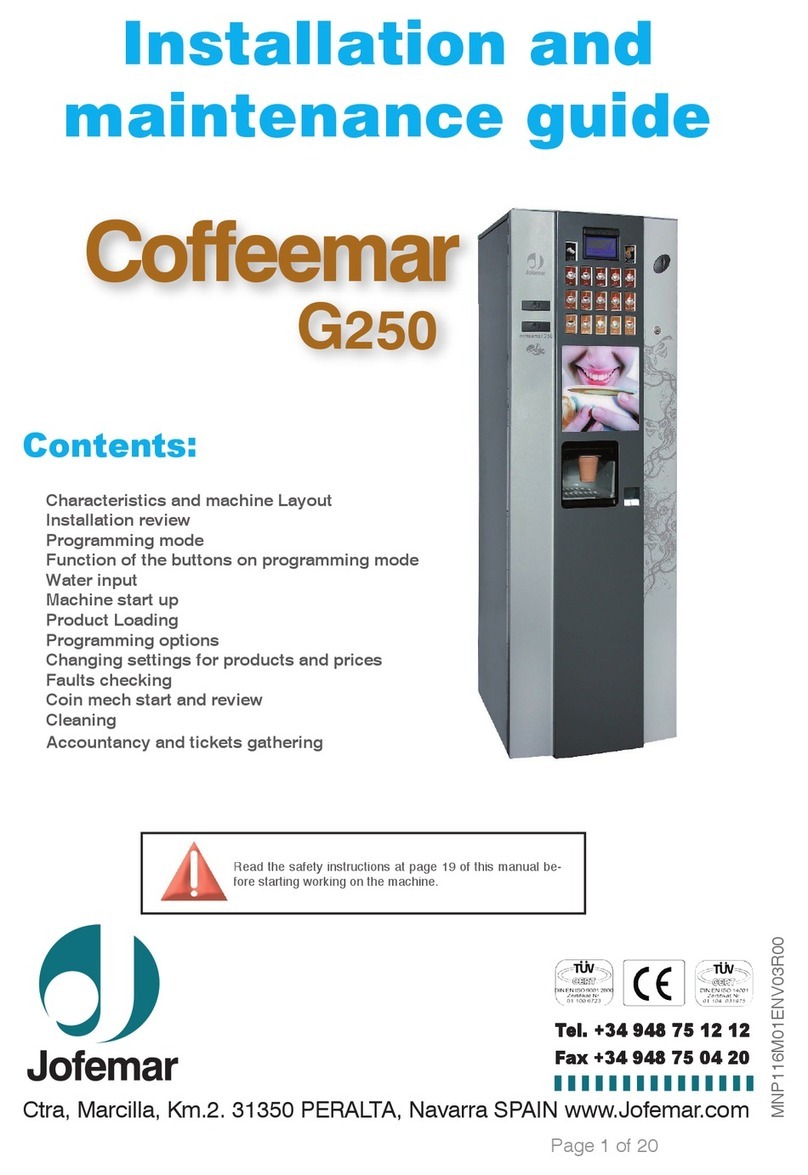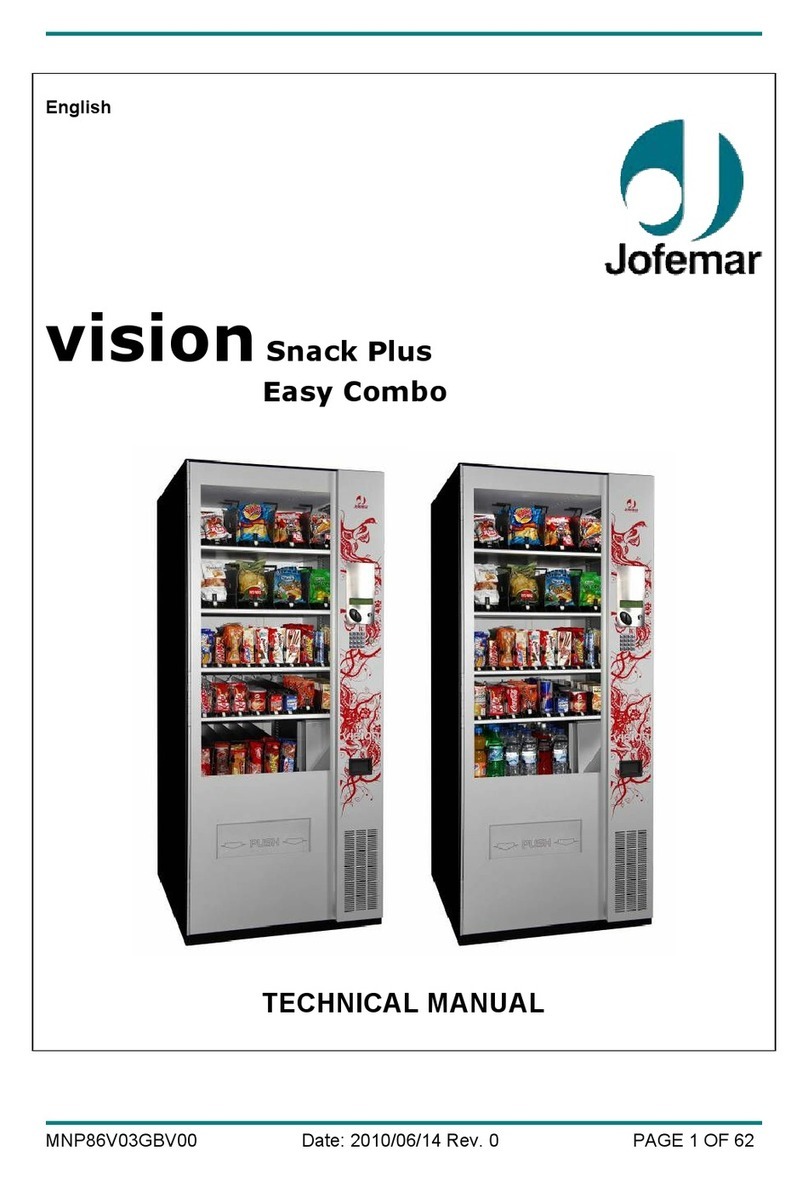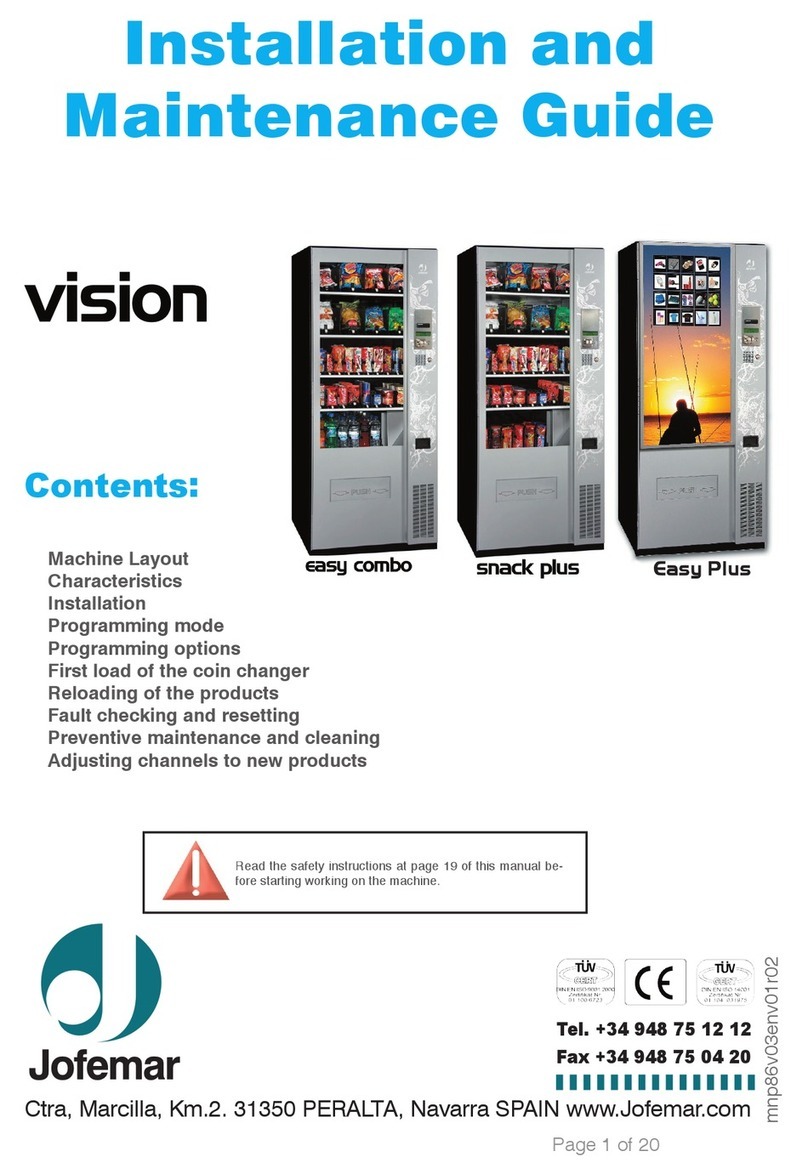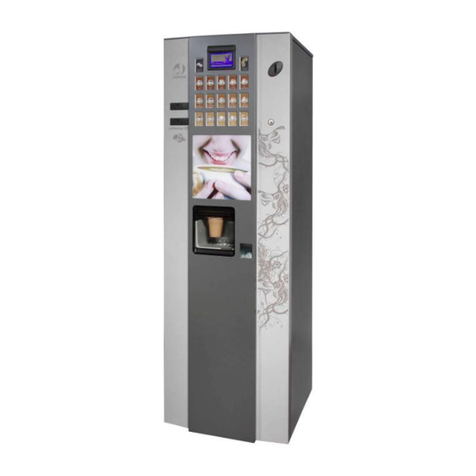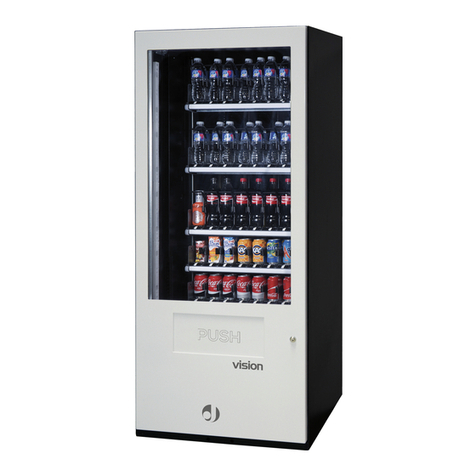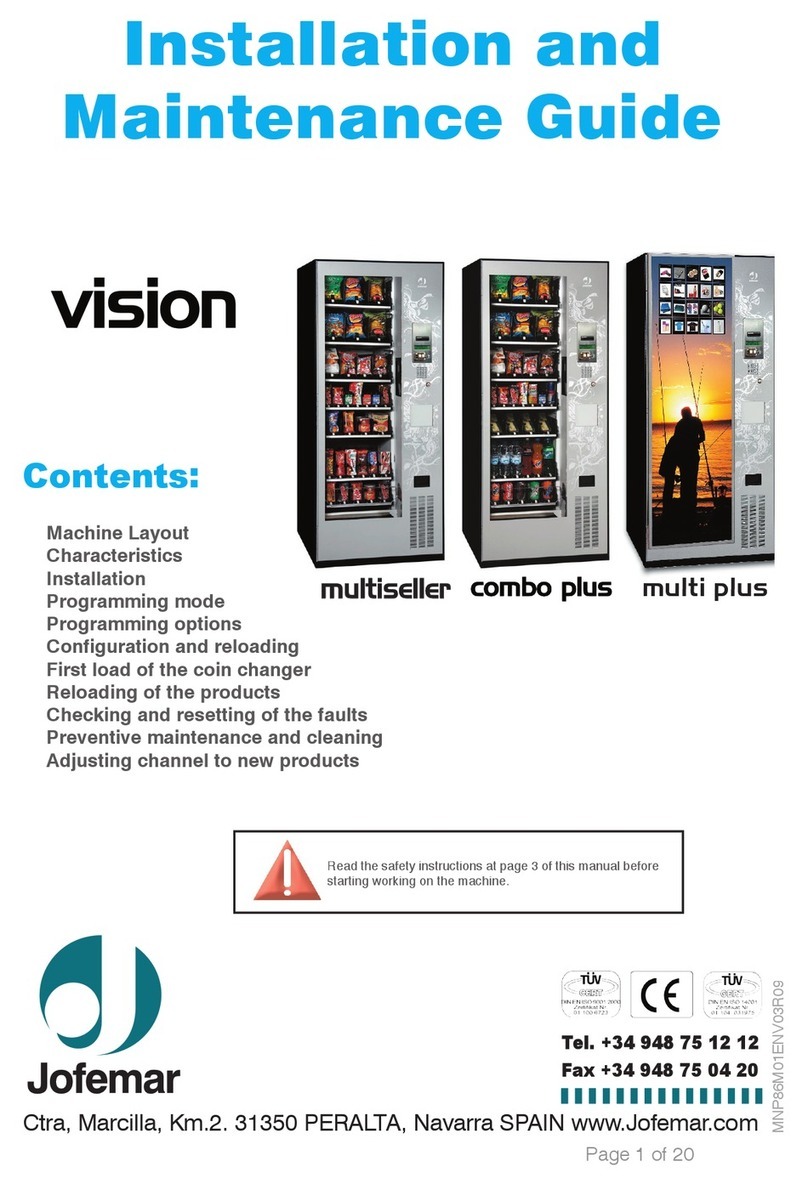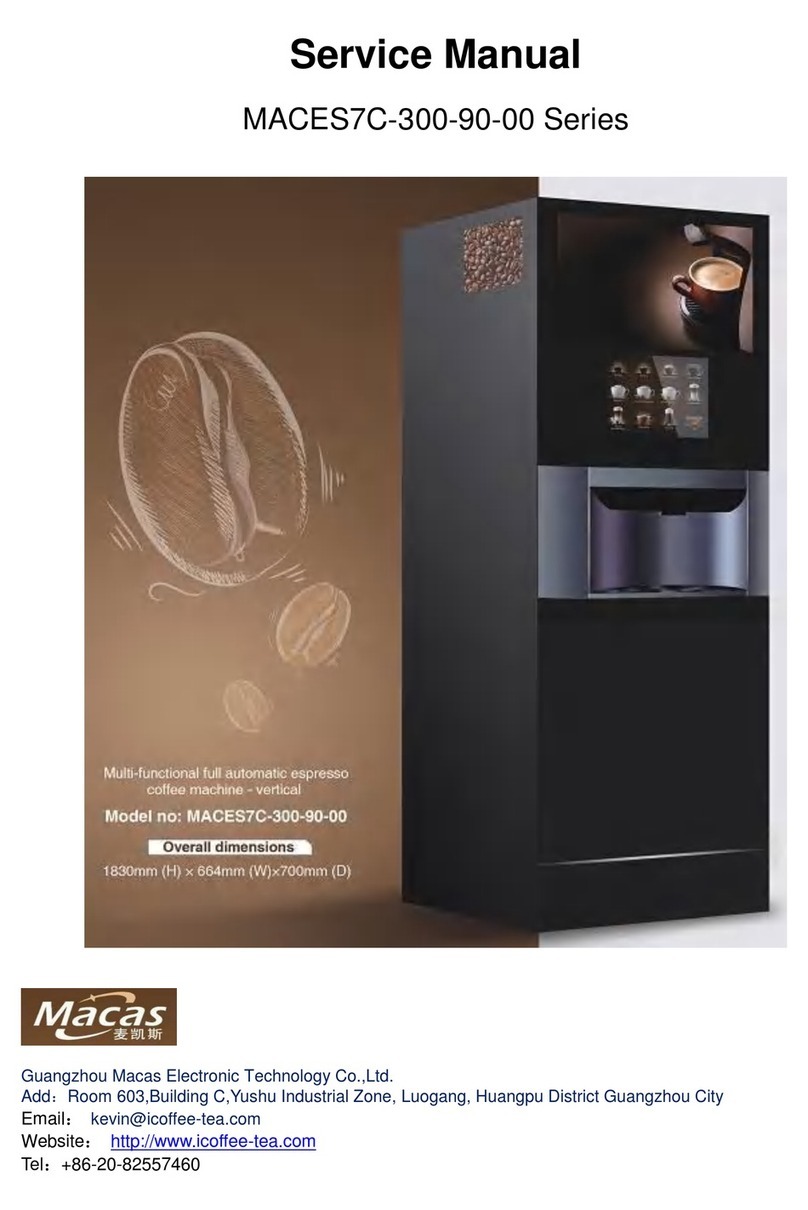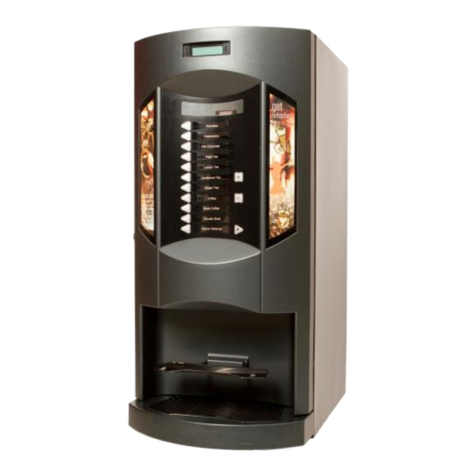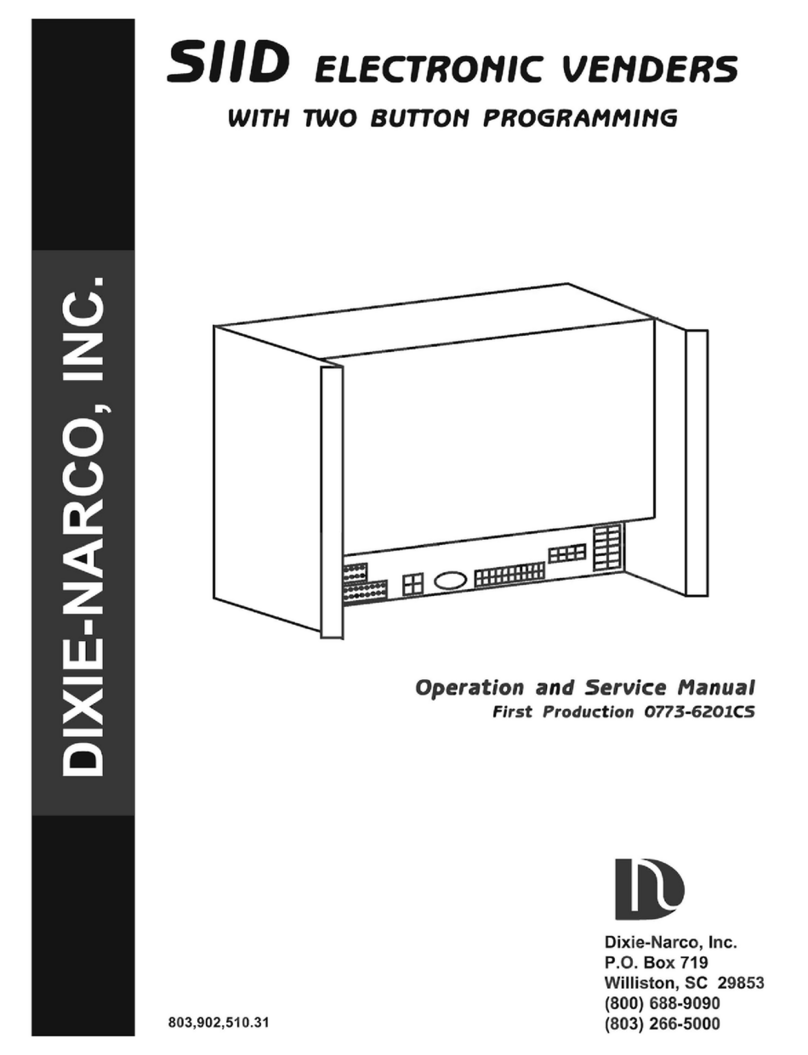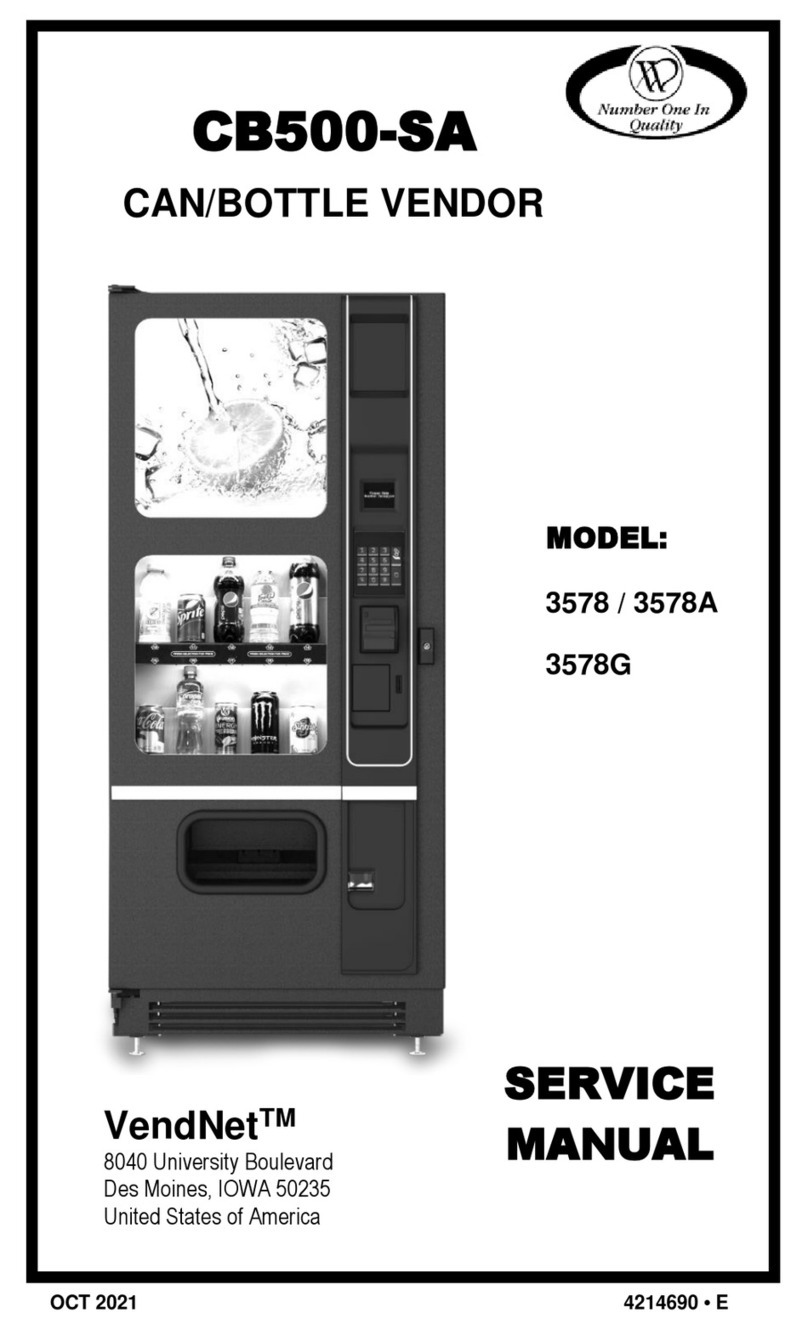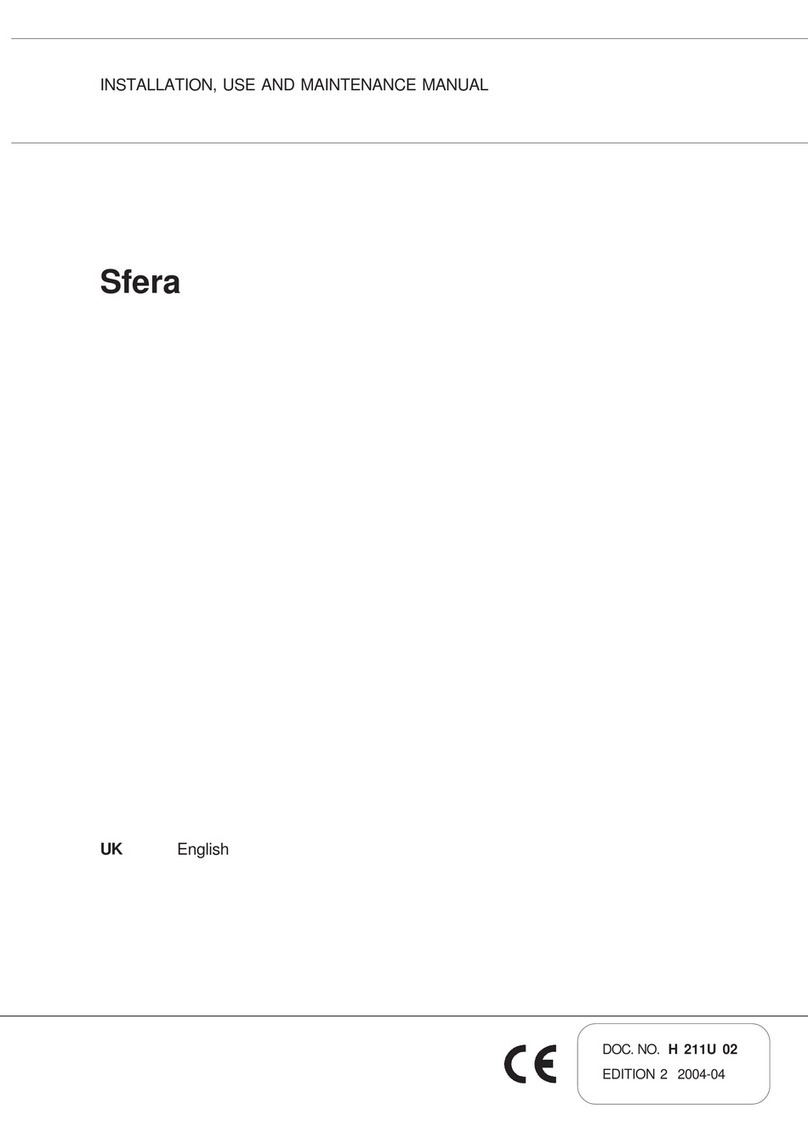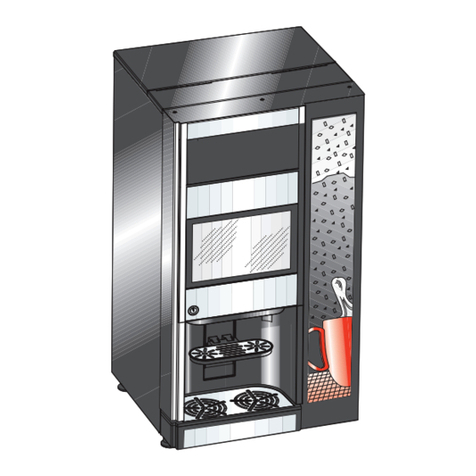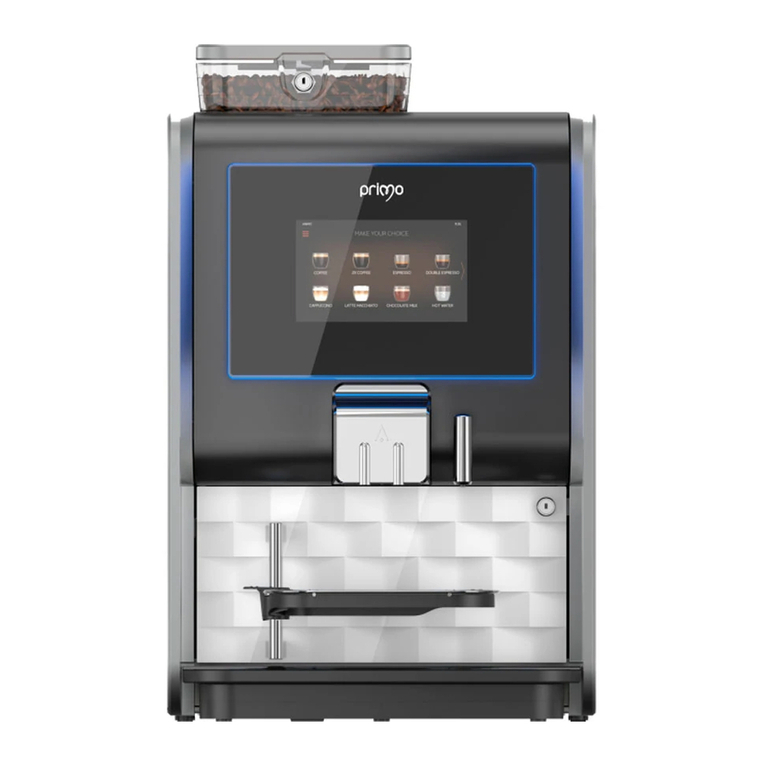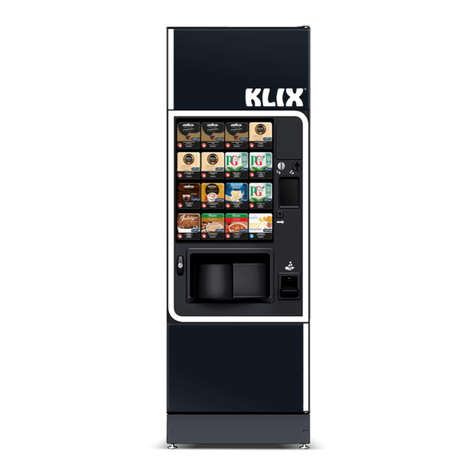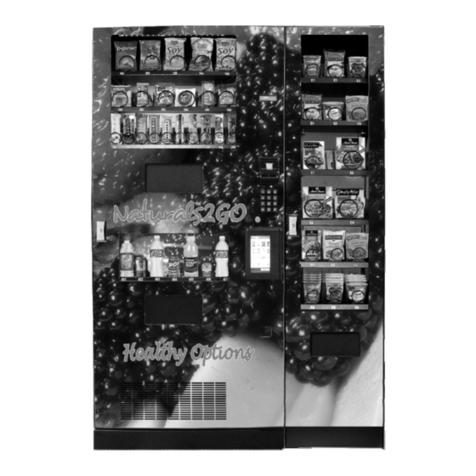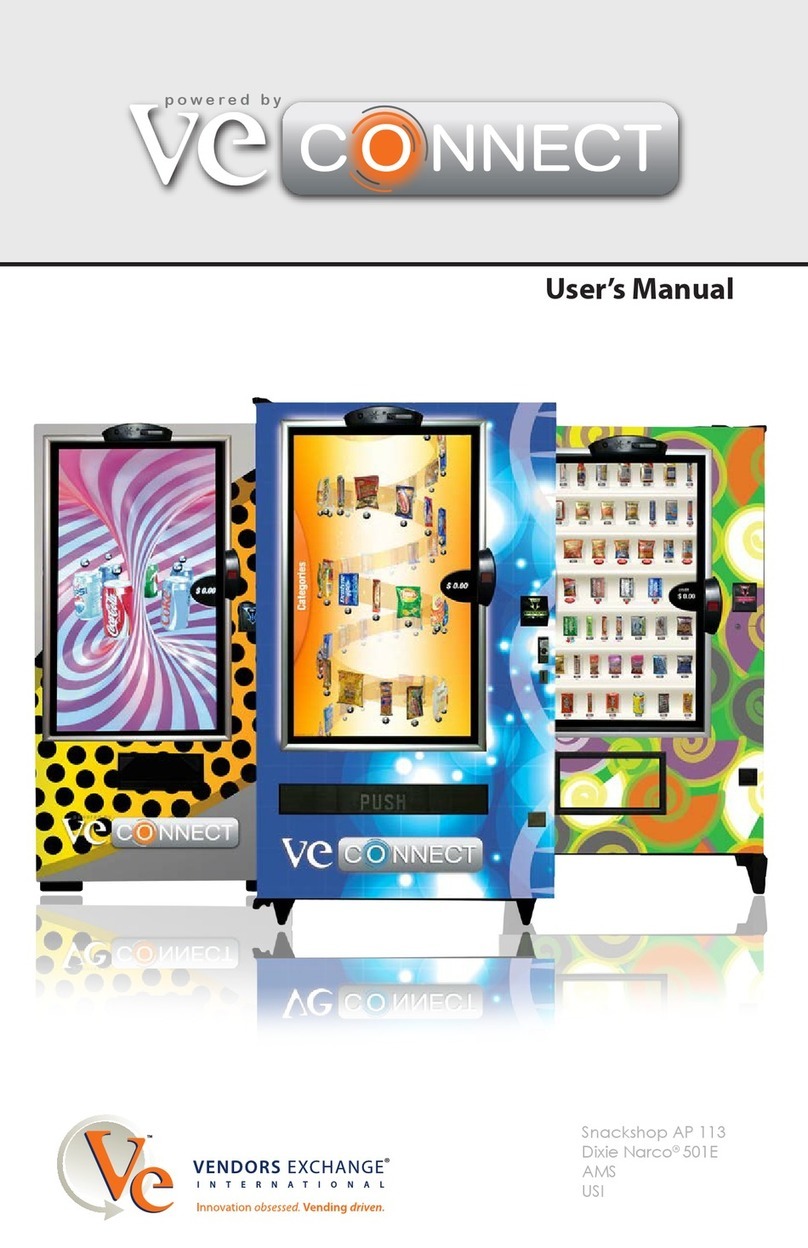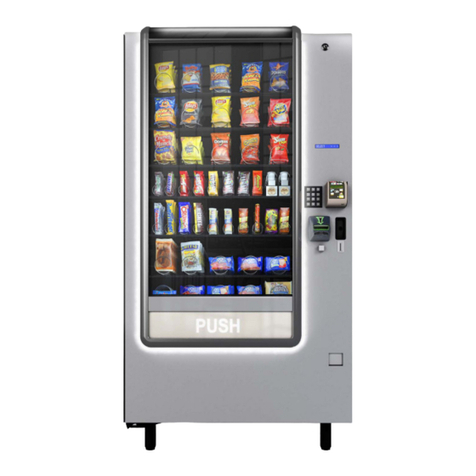MNP37M03GBV00 Date: 24-11 Rev. 0
Page 4of 79
Table of Contents
1.-Symbols used in this document................................................................................6
2.-Description of the machine.......................................................................................7
2.1.-Construction......................................................................................................8
2.1.1.-Advertising panels.....................................................................................8
3.-Technical specifications. ..........................................................................................9
3.1.-Initial electrical installation.................................................................................9
4. -Installation and start up...........................................................................................9
4.1. –Installation.......................................................................................................9
4.2. -Start up..........................................................................................................10
4.2.1. -Connection to water mains. ....................................................................11
4.2.2.-Connection to mains................................................................................12
4.2.3.-Safety switch...........................................................................................13
5.-Preliminary operations............................................................................................14
5.1.-Cup loading.....................................................................................................14
5.2.-Spoon loading.................................................................................................15
5.3. -Filling the water circuit....................................................................................16
5.4.-Disinfection and washing of beaters and water circuits....................................18
5.5.-Loading sugar, soluble products and coffee beans..........................................22
6. -Basic machine operation concepts........................................................................23
6.1. -Safety systems. .............................................................................................23
6.2. -Water circuit...................................................................................................24
6.3. -Electrical drawings.........................................................................................26
6.4. -Air-break.......................................................................................................28
6.5. -Pressure boiler...............................................................................................29
6.6.-Coffee mil –doser assembly...........................................................................31
6.7.-Coffee brewing assembly................................................................................32
6.8.-Soluble container assembly and beater assembly...........................................35
6.9. -Cup dispensing assembly..............................................................................36
6.10.-Sugar and stir-stick dispensing assembly......................................................39
6.11. -Rotating arm................................................................................................40
6.12. -Kits available as an option............................................................................41
6.12.1. -Water intake pump................................................................................41
6.12.2.-Water softener.......................................................................................43
6.12.3 Flavour filter for hot drinks .......................................................................48
6.12.4 Jofemar BT-10 banknote reader kit..........................................................49
6.12.5 Coffeemar Modem Kit..............................................................................51
7.-Machine cleaning and maintenance. ......................................................................53
7.1.-Daily cleaning. ................................................................................................54
7.2.-Weekly cleaning..............................................................................................55
7.3.-Monthly cleaning.............................................................................................56
7.4.-Yearly cleaning...............................................................................................56
8. -Version names......................................................................................................56
8.1. -Coffeemar G-500 with 3 beaters and 4 containers. ........................................56
9.-Compliance with regulations...................................................................................57
10.-Products which can be dispensed from the machine............................................58
11. -Programming mode.............................................................................................58
11.1. -Programming options...................................................................................58
11.1.0. –OP_0 price options. ..............................................................................61
11.1.1 OP_1 money accounting. (only MDB machines)......................................62
11.1.2 –OP_2. product accounting......................................................................62
